I2 Diamond Clarity – Why You Need to Stay Away From It
The diamond world is full of technical terms, charts and quality issues. As a consumer, I know it can be overwhelming and confusing especially if you are a first time shopper. And there are some certain qualities that give cause for concern.
More specifically, if you come across a diamond with I2 clarity or I3 clarity, you better be extremely cautious as they are big red flags. But what does I2 diamond clarity actually mean? What is I2-I3 clarity? And why should you avoid it?
Continue reading to find out more and how it may affect you…
How Does the Grading System Work And What I2 Clarity Means?
During grading, the clarity of a diamond is assessed based on the number/severity/size/location of the inclusions it has. In general, the less visible and severe the inclusions, the higher the clarity rating. This can be summed up with a simple chart below.

The term I2 means Included 2. As you can see above, the I2 clarity grade can be found at the low end of the spectrum. By definition, they have obvious inclusions which can be easily seen using a 10x loupe (and even with the naked eyes).
In fact, most I2 diamonds have inclusions that adversely affect their transparency and brilliance.
Besides a negative impact on the diamond’s appearance, the inclusions in I-2 diamonds also pose a significant durability risk to the stone. To put it bluntly, you run a higher risk of the stone chipping and breaking due to weak structural integrity.
Let’s Take a Look at Some I2 Clarity Diamonds
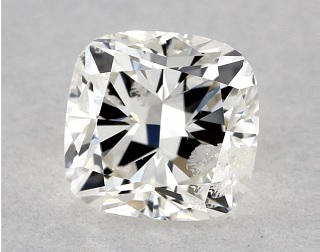
GIA #5181358501
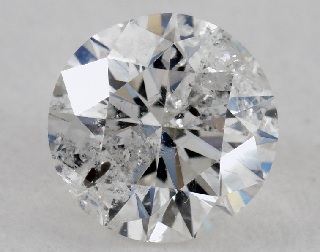
GIA #6252294182
On the left is a GIA graded cushion cut diamond with J color and I2 clarity. The huge feather at 4 o’clock has a heightened risk for chipping to occur. And on the right, you can see a round diamond with opaque twinning wisps which impedes light performance.
Let’s take a look at a couple more examples of these heavily included diamonds…
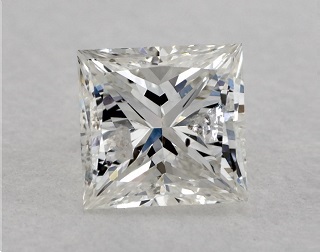
GIA #5253947604
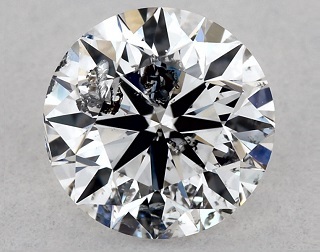
GIA #3275515850
The princess cut diamond on the left has a black inclusion at the center of the table and a big feather inclusion that’s greyish in color. On the right is a 0.60 carat round diamond that has a huge crystal inclusion which is reflected around its body multiple times.
In case you haven’t noticed yet, the common denominator among these 4 diamonds is that they are NOT EYECLEAN. This means you will see the offensive inclusions without any loupe or magnification tools.
And mind you, these are accurately GIA certified I2 diamonds that we are talking about. The ugly truth is, most sellers who peddle low quality diamonds with I2 clarity don’t even use reliable grading reports to begin with.
This means when you see claims of I2 or I2-I3 being made by a vendor who doesn’t offer a GIA report, the diamond is much much much much much worse than it really is in reality. Unethical sellers do this to grossly misrepresent the junk they are selling in order to rip consumers off.
Differences Between I1 and I2 Clarity
On a technical level, the differences between I1 and I2 clarity grades lie in the severity and visibility of the inclusions. The inclusions in I2 diamonds are usually more visible, more numerous and pose a bigger durability risk.

Side by side comparison of an I1 diamond vs I2 diamond.
With I1 diamonds, you still have a minute possibility of finding one that is eyeclean or less noticeable to the naked eyes. But the odds of finding one is heavily stacked against you. For the record, I don’t recommend buying I1 or I2 diamonds.
Other differences between I1 and I2 diamonds are their availability and the kind of places that sell them. For I2 clarity diamonds, you will never find them being sold by any decent jeweler.
The rationale is simple and that’s because they don’t want their reputation to be associated with low quality goods. In fact, most businesses actually cap the lowest quality of diamonds they carry at I1.
Shopping Tips for Buying Diamond Rings With Lower Clarity
I2 diamonds are cheap for a reason and that’s because they are at the very bottom of the garbage barrel. They have eye visible inclusions that are detrimental to the brilliance of the stone and are generally ugly.
For most people, the underlying reason for buying an I2 diamond is due to limited budget and probably to get a larger sized diamond. My advice to you is, scrap the idea of buying an I2 diamond completely.
Why?
Ask yourself, how would you feel if you received a diamond ring that looked like this?
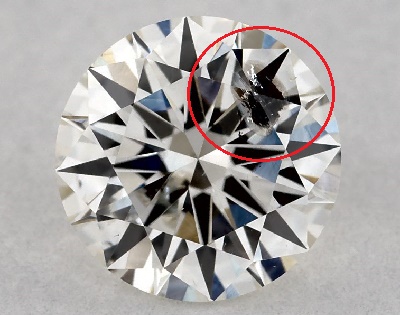
GIA #2276428098 – 1.01ct H I2
I want you to stare at that diamond and let the sorry sight of the stone sink in. Next, imagine yourself to be in the shoes of your recipient. Would you be elated or be scarred for life when you see the diamond ring? Would you want to wear this abomination on your finger?
I’m pretty sure your answer is: No!
Here’s the thing. When individuals are looking for a lower clarity stone, it is usually because they either think it doesn’t matter (though we now know that it does) or they want to get a great deal.
If you are considering an I2 or I3 diamond for such reasons, let me tell you that there are better ways to save some cash without sacrificing so much in quality. Here’s what you can do instead:
1) increase your budget or delay the purchase until you save up more cash.
2) lower your expectation of the carat size or color for a stone with decent clarity.
3) consider buying a lab grown diamond instead.
My personal recommendation to get the best value for money is to shop for G or H color diamonds with VS2 or SI1 clarity. This ensures a diamond that faces up white and is eyeclean without having to pay the premiums for higher color/clarity ratings.
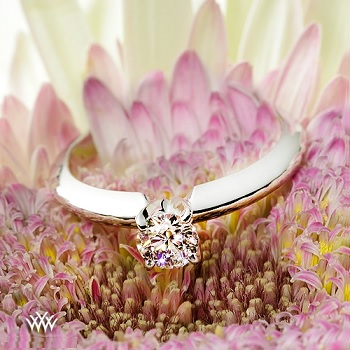
0.346 ct I SI1 diamond ring
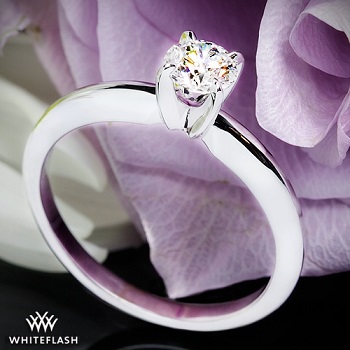
0.4 ct G VS2 diamond ring
Buying a breathtaking diamond doesn’t have to be expensive and you don’t have to go down to I2 for costs reasons. In fact, both rings above cost roughly $1000 inclusive of setting at White Flash. You just have to be smart about it and work within your budget realistically.
Let’s Wrap Things Up – I2 Diamond Clarity
Hopefully, this article has provided you with useful insights to I2 diamonds and a better understanding of the visual implications caused by low clarity grades. I’ve also revealed some tips for people who are shopping on a tight budget.
Here’s the bottomline; if you are shopping for an engagement ring, you definitely want to pay attention to quality. Please do yourself and your recipient a favor by avoiding an I2 clarity diamond. It simply will not cut it (pun intended). Better quality is better – period.
If you have further questions or need more advice, feel free to get in touch by dropping a comment below! Good luck in your purchase!
Related Articles
Leave A Comment

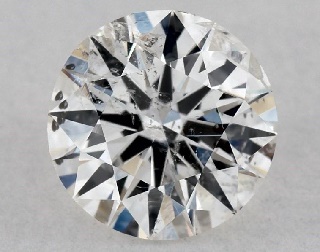
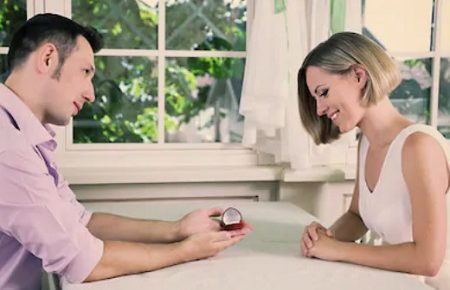
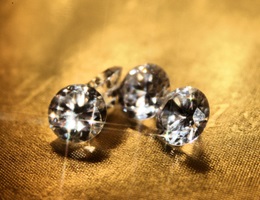
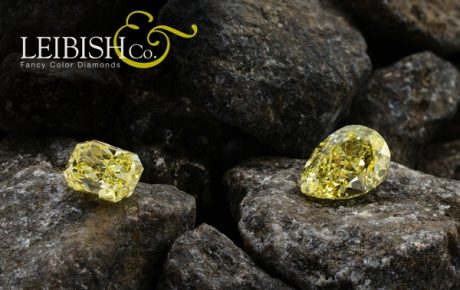
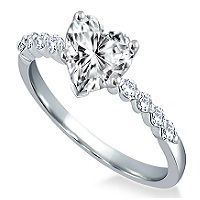









32 Comments
What does the term I2-I3 clarity mean? Is the meaning of I referring to Imperfect?
I’m glad you asked. This is a common question that I receive from readers who try to cheapen out and look for “discounts” from dubious businesses that claim to be doing wholesale business. It’s a marketing gimmick and one that’s illegal by FTC’s definitions.
You will often see these sellers on eBay, Amazon or Overstock which I would personally avoid. When trying to peddle diamonds with terrible quality, sellers often mark them as “I2-I3”, “diamond clarity i2-i3” or “I2 to I3”.
This can be confusing, because which is it? What exactly are you getting? Are you getting an I2 or an I3? Hint*: In most cases, neither. You get industrial bort quality diamonds which are so included that they are only suitable for industrial use.
Who graded the stone? Is the grading even reliable in the first place? This goes back to the points I made in the write up on cheap wholesale scams. As I mentioned above, most jewelry retailers who care about quality and their reputation won’t even carry them at all.
And I’m not sure whether you noticed. The unethical ones that do sell I2 engagement rings? They often do so by showing stock pictures of flawless looking rings that are NOT representative of the quality you will receive.
The devil is always in the details. People get ripped off because of greed and stupidity. And obviously, you didn’t because you actually question things.
What do you think of estate sales? I came across an auction house recently that was listing an engagement ring with diamond clarity i2 certified by GIA with D color and 1.5ct in carat weight. With a casual examination, I did noticed a dark black inclusion in the diamond but it seems way cheaper than other jewelry I could afford.
I made my stand about I 2 clarity ratings in this article and I definitely will not recommend readers to buy poor quality jewelry. When you say D color, that’s the highest possible rating for a diamond and it is ridiculous that you are willing to pay the premium for a colorless diamond only to pair it with one of the worst clarity grades possible.
And it makes me question why. Logically, you would be better off with a lower color like J or G and used the money saved in that towards better clarity.
My husband and me were browsing eBay recently and came across a seller with a ring that states diamond clarity 12. I’ve been looking around and couldn’t find any answers. What does diamond clarity 12 mean?
Do you have a direct url weblink to the listing? My educated guess is that this is a typo error. I think the seller meant diamond clarity I2 (i2) instead of diamond clarity 12 (twelve).
I live in Belgium and some of the jewelers here use pique 2 and imperfect 2 terms to rate diamonds. Is this the same as Included 2 or clarity i2? What about colour rating systems and are they the same as those used in the US?
Some European labs use pique as the same “definition” for included. However, I would not go as far as to say they are equivalent as grading standards differ. GIA and AGS are the only gemological labs I would recommend readers.
Whats the difference between 1.050ct and 1.50ct? i’m confused
There’s a difference of 0.45ct in weight and also physical size.
1.050ct is close to 1 carat.
1.500ct is substantially bigger.
What is current value of 1/10 c.t tw in a cross. Diamond color is j-k clarity I3 cross is Sterling silver n 18k gold plated Sterling silver. It’s from Macy’s says 100$ and on sale for 45$. it’s for a 50th bday gift. Do u think it’s worth it in value I don’t want costume jewelry.
I’ve said this time and again, I3 is garbage tier quality and at industrial quality standards. What are you expecting for dirt cheap diamond jewelry? You basically get what you pay. You can be sure that it isn’t going to be worth more than what it is sold for. For retail items like this, you can expect at least a 2 to 2.5 times mark up.
Thank you for your great information. I came across a I2, I was told by the jeweler that it was the best. But after reading your site….. I won’t be going back. What do you think of Costco’s diamonds. I noticed they have a VS2 I, would you say good deal or keep searching elsewhere? Your advice is greatly appreciated.
LOL. Sorry, I chuckled a bit when I read that. If a jeweler says an I2 diamond was the best, I’m really wondering what kind of standards they have and the intent behind saying that. You are right about not going back. For Costco, you can read my review here: https://beyond4cs.com/reviews/costco/
What is your opinion on ‘salt and pepper’ diamonds? Do you think they are worth buying if you don’t mind how they look?
Salt and pepper is just a fancy name for diamonds that are choke full of inclusions. Personally, I have nothing against them and if you like how they look, by all means buy them. I would caution that most of these are grossly misrepresented in their quality and will have brilliance/sparkle adversely affected by the quality (clarity) of the diamond.
Thank you Paul for the clarification on diamonds. What about clustered diamond ring with clarity I2 and color I/J. Total weight is 1.5ct on 10k yellow gold sold for CAD 3000. The jeweller offers insurance for replacing diamonds that may come off. What do you think? Appreciate your response
Why would you spend 3000 CAD on junk instead of buying a proper diamond ring? The fact that you are asking me this question after reading this article tells me you learnt nothing at all. Were you expecting me to OK it and to validate a purchase that would rip you off?
Hi Paul,
I recently got a pair of IGI certified 1ctw princess studs color I clarity I2, under $1K. Now that I look at them more, I see some small inclusions, not black ones more light grey, when I look up closely but when I look at them from a few inches away I cannot see them and the diamonds really sparkle. The diamonds are not cloudy or white, they really are clear. Two questions. 1. Is this just a better/lucky pair of I2 studs or still a rip off/should be returned? 2. Is IGI cert worth anything, or only GIA / AGS?
Lucky? Well, I think you got to relook at your definition of lucky. The fact that you can see inclusions with your naked eyes for such a small sized diamond (i.e. 0.5ct on each diamond) tells me that the clarity is junk tier. The IGI cert is a rip off and unreliable form of grading documentation. Let me be very clear about this. THere’s no luck involved when buying diamond earrings like this. Unethical jewelers that sell unreliably graded diamonds are out to take advantage of uneducated consumers like yourself. You best get a FULL REFUND of your money and go elsewhere. And if you can’t get a refund (only an exchange or some other nonsense), it’s a telltale sign you are locked into a purchase with unfavorable purchase terms and this is a typical practice of scumbag jewelers.
Are there any diamonds being rejected by the labs from even get I3 clarity because of too many inclusions?? I am just curious…
No. GIA will still grade them as I3 theoretically. In the real world, there aren’t that many I3 diamonds that are certified by GIA. Why? That’s because most vendors already know the crap quality the stones have and won’t waste money sending the stones to GIA to get a certificate that doesn’t help them better market the diamond.
I purchased a diamond from James Allen and probably should have done more of my own research first, but I was told by so many sources how reputable they are. The agent sold me on an I2 diamond, with an IGI grading report, that they said “has no visible inclusions whatsoever!” and that is a quote. Turns out….it does have a large inclusion I can see on the side of the diamond.
I really didn’t take the proper time to thoroughly examine it when I got it back in the mail. So it was past the 30 days they offer for returns (feel so mad at myself). But I tell this story just so others won’t make the same mistake and blindly trust James Allen. They are looking to make money just like any other business, so watch out! They don’t just sell high quality diamonds and they do use the substandard grading reports for MANY of them, even natural diamonds.
Can you share the full details of the ring purchased and when you bought it? If you can include all the correspondences made, please do so and I can help you look into it. As far as I know, James Allen does not sell I2 diamonds and the lowest that they go to is I1. With that said, not all diamonds are eyeclean even in the SI range much less a diamond in I1 or I2 clarity range. That’s why the videos are there for; to help you assess eyecleanliness.
have a custom made 7 diamond cluster set in 40grams of 16k gold, yes 16k The diamonds are as follows, 1.00 mine cut, .10 girdle chip, G, VS. 2) .75 marquise, .02 chip, SI2, H. 3) .70 rbc, .03 chip, VS2, H. 4) .50 rbc,SI2, L 5) and 6) .28 each, princess, SI2.J 7) .25 rbc, I-1. H. The total diamond weight – 3.70 carats I know the approximate gold value, but what is approximate pawn shop value on diamonds?
Without proper certificates or documentation, no one can give you an accurate answer. Offhand, I can pretty much tell you these are low quality stones and I am assuming there’s no certification. So, the real quality of these diamonds should be MUCH lower than what is stated. You should bring the ring to an appraiser if you want to know the value of the diamond ring.
Hey, I am currently buying diamond on a pendant. Pendant diamonds are usually small and almost all the options I see have very low ct. around 0.02-0.07 ct per diamond. the diamond are small about 0.1-0.2 radius. Do you think when the diamond is so small it is smart to buy i2 or SI quality diamonds. I am not someone with a budget really. I just dont want to buy high high quality diamonds on such small diamonds which will not leave much of difference visually ( im assuming)
I2 diamonds are really garbage tier and even if the diamonds are small, it is going to affect the visual appearance. I would say that SI and VS diamonds would be better for ungraded stones and this quality can vary from vendor to vendor. The thing is, price differences are minute when comparing diamonds of such small sizes. It makes sense to go for higher quality melees.
I am considering bidding on an auction that claims diamond earrings are $3300 value. they are 14K White Gold Diamond (I-2,I-J)(1.02ct) Earrings (~weight 0.8g). After reading this article, I will never pay this kind of money for garbage, but…. What is the actual value of these garbage grade diamonds? Thanks for this article.
I have no idea. That’s the thing about valuing diamonds. Without know exactly what the clarity grade REALLY is, what the color grade REALLY is, what the cut quality of these diamonds REALLY are, there’s no way even for a professional like me to know. But what I can tell you from experience is that uncertified (when i say uncertified, I am referring to diamonds WITHOUT a GIA or AGS report) I2 diamonds are pure garbage in clarity.
hello I read your site. and I liked it when you said to set your sorry eyes on this…. but I am in the process of making a ring and I wanted to pay less for diamonds. so I am having 10 diamonds put side by side at .5 each to equal. .50 k total weight. and the goldsmith advised I2 diamonds. they are small and five will go across and 5 below it…. the cost will be all together to make the ring in white gold 2130 including 3 rhodium dips and diamond replacement all insurance / and platinum with insurance and polishing and diamond replacement loss 3000.00 is that good. the diamonds are each small, so it seems it will be okay…. is that ok. thanks marie
You should have gotten your answers when you read this article.